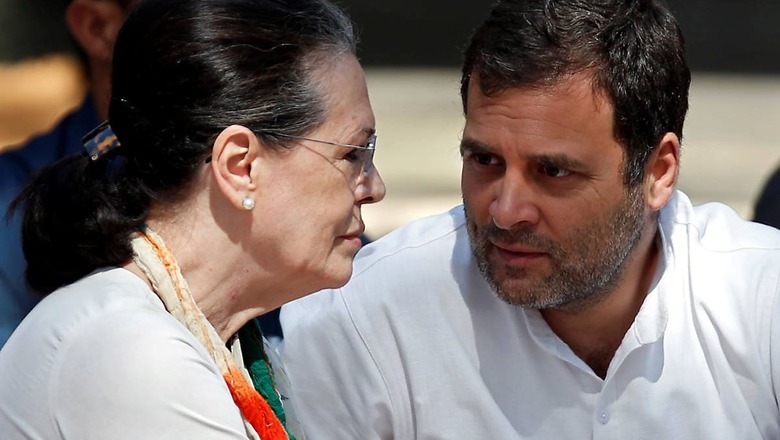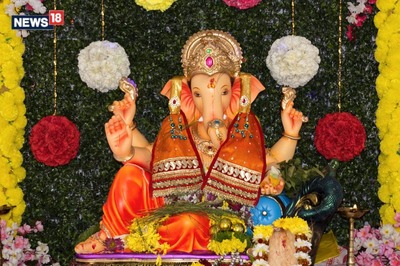
views
A soul-less party. A clueless, self-serving rank and file. A rotten mess. The Indian National Congress (INC) of 2020 is anything but a political instrument of the masses for the masses that it once was. At best, it’s a group of clueless leaders with little or no connect with the people of India, with little or no connect with their own historic past. And virtually no formal position on anything.
For instance, does the Congress fully support all the farmers’ demands? Or does the party have a nuanced stance on them? If so, what are those points of agreements and disagreements? The apex body of the party hasn’t deliberated on any issue India confronts – beyond the realm of political expediency. The Congress Working Committee rarely meets, and when it does, it struggles to get over it quickly to debunk the crisis the party’s leadership faces.
The CWC does not discuss the party’s hollow apparatus. The AICC sessions are a rarity. And holding consultations with civil society a thing of the past. In short, the grand old party has become obsolete and a pale shadow of its historic past. Across India, its spaces are consumed by regional and sub-regional forces, with no impact on the national character or say in the current autocratic policy-making processes.
With the BJP’s continued ascendance as a dominant party in India today, bent upon making us a Hindu state, a fractured opposition and its continued fragmentation into regional and sub-regional parties that do not even remotely challenge the BJP’s dominance, question remains: what happens of the INC? Will the grand old party survive the despondency that plagues it, the threat of extinction?
As 2020, a year of turmoil, ends, and India’s democratic ideals slip a few ranks further to normalise bigotry, sectarianism, autocracy and crony capitalism, revisiting the historic Congress session at Nagpur exactly a hundred years ago –from December 26 to 31, 1920 — holds lessons for not just the INC, but also for the beleaguered liberal social democrats. Times have changed, and so have the contexts, but the building blocks and the ideals of the era are worth a revisit.
Circa 1920: Craddock Town, now Congress Nagar, was the venue of the session, attended by over 400 leaders from across the continent. Late Jamnalal Bajaj was the chairman of the Reception Committee and late C Vijayaraghavachariar the President of this 35th ordinary session.
Indian nationalist leader Lokmanya Bal Gangadhar Tilak has passed away. The Congress has lost in him a rallying point. But the national freedom struggle is about to witness the emergence of a simple man who would have his imprint etched forever on the national conscience with his new panacea. This was, as many Congress observers put it, the beginning of the Gandhi era.
A booklet of Congress resolutions from 1920 to 1923 was printed at the Allahabad Law Journal Press and published by Pt Jawaharlal Nehru, who was at the time the INC general secretary. The archival document makes for an interesting reading because it tells us of the issues and events that the Congress was seized of, and the discussions and debate around them. A stark contrast to the present-day beleaguered Congress is that the INC of those days was quite open and frank about its dialogues and met frequently to resolve the contentious issues concerning freedom, leadership, programmes and funds.
In simple language, the 1920 congregation freezes the framework and a roadmap to achieve its objective. And reaches out to the masses, the working classes and the peasantry, of this huge land. It opens up to embrace masses to play a role in its decision-making, a character it shed down the line, after a few decades of independence and completely post-liberalisation.
What does it stand for? Complete freedom for self-determination. How will it achieve that goal? Through the insistence for truth and non-violence (Satyagraha and Ahimsa). Why? Because political, economic, and social freedom are the ultimate human values. Who will achieve this goal? The people of India, from the platform of the INC.
Two months before the session, the Congress Working Committee (CWC), comprising of stalwarts, discuss with deep engagement the draft resolutions to come up before the general assembly. The words carry the weight of the expectations and resolve. They are not meant to be words, but action.
Several important resolutions – including the setting up of the Tilak Swaraj Fund to raise finances to run the affairs – were passed, but the first three mark a watershed moment in the freedom struggle.
The first defined the object of the Congress: attainment of Swarajya by all legitimate and peaceful means, also formed the Article I of the Congress Constitution, ratified through another resolution. The second pertained to ‘Non-Cooperation’, a programme the Congress was giving to its rank and file – the resolution elaborates upon what it meant by non-cooperation and includes of an exhaustive list of things individuals could resort to or choose from. The third firmed up the INC’s organization structure – from block, tehsil, district, provincial, to national level – to bring the masses into the freedom struggle by convincing them of the means to achieve it.
This was, according to some veteran Congressmen in Nagpur, the start of the institutionalization of the Indian National Congress. Today, the Gandhians and the Congress, have forgotten Bapu’s politics, as if he preached only two edicts – truth and non-violence. The political Gandhi has been conveniently buried even by the staunch Gandhians, because it suits them and us to keep him confined to a symbolic Charkha.
Before the Gandhi era, the Congress’ appeal was limited as it is today; it became a mass movement because of the seemingly difficult yet clear objective for which it stood, the means to achieve it, howsoever difficult it sounded then, as now, and the difficult part of taking it to the masses in times when travelling long-distances was a luxury and modern communication system yet to dawn.
Between 1920 and 1937, the Congress grows manifestly in the masses – in its history, in no other times has it grown in memberships as in those 17 years, as a paper by Professor Neeraj Hatekar of the Mumbai School of Economic and Public Policy (MSE&PP) tells us. And it was a period when no elections were held, nobody contested for any position with desperation that you see in today’s power-drunk and power-hungry young leaders, who would go any length to achieve power, but won’t be able to tell us, what are they to do with that power, the money, and the authority.
A number of new laws tightening the grip of the Raj on the people of India; a pandemic (Spanish Flu) that had consumed millions in the sub-continent alone; a fractured society; mass protests all over; a disrupted world order, and tightening and expansion of Imperialism – the scene of the 1920s was no different from the subjective conditions prevailing in the 2020 India; there are stark parallels.
With a fractured opposition and a soaring new idea that is at odds with the constitutional tenets, the grand old party’s vitality as a political instrument from here on hinges on the same questions that confronted the Congress in 1920: What is its national purpose? What is its programme? And for whom and why does it exist? On its foundation day, today’s Congress unfurls the flag but has no stomach to enter into deliberations over the crisis of democracy our land faces.
The despondency however bothers the stakeholders that form what the late social scientist Rajani Kothari called a Congress system – a model of the relationship between politics and society through mediation in the stratification and cleavage system, a dynamically conceived field theory of social interactions. That model, now a crumbling edifice, marked the legitimization of a two-fold process, as Kothari wrote: Consensus building on the one hand, and the structure of competition, dissent, antagonisms on the other hand. “In other words, legitimizing of both, a system of authority and opposition to it.”
In the post-independent India, when the Congress was in power for a long stretch, its central role in governance took prominence over the party system that was to essentially manage the control of power and patronage, mobilise new social groups into the political mainstream through participation in government power and public policies. Now that it is no more a central political instrument of the authority, the Congress must return to giving prominence to its organizational apparatus. It is a pre-requisite to its political revival. But it’s the system that ought to be reinvigorated to play a strong and meaningful national opposition and an alternative to the BJP and its parent organization, the RSS.
It is here that the 1920 session has critical lessons: because the INC – and so also the scattered and fractured social democrats and the intelligentsia of all hues – must address the questions pertaining to its hollow apparatus, a complete lack of a new national imperative, and a means to achieve those.
An uncontested and unchallenged ruling regime is escaping away with virtually every decision that creates fissures in the society and causes social and economic pain – from demonetization to flawed GST to the new farm laws that have stirred the peasantry into protests all over. If lack of a dialogue and consensus marks the functionality of the Modi government, a complete collapse of deliberations within and outside plagues the INC’s functionality at local, regional, state and national levels.
India stands at a juncture where a one-man regime – aided by a succulent cabinet, a pliant media, a clever executive, and a friendly judiciary – is using democracy to thrust undemocratic ideals upon the Republic, suffocating the probing voices, while the political opposition is clueless, obsolete.
Vast sections of masses are supportive of the regime, for varied reasons including the authoritarian streaks that the BJP government demonstrates quite unabashedly. But vast sections are also antithetical to the BJP’s idea of India – mobilizing them on one platform is hard and looks impossible without the existence of a national anchor.
A pandemic is raging through, the economy is in tatters, the federal polity is crumbling, sectarianism is on the upswing, and our society is fast eroding into a mobocracy fighting over untruths. The blame must largely be upon us, the people. While we may have our differences of castes, creed, religion, or ideology, we forgot that we are bound by the edicts of our Constitution; some of us have gone too far to obliterate that and embrace the archaic decree of a bigoted religious order.
Is the Congress ready to be the common denominator to rope in the masses of all hues? For that, is it ready for a course correction on some of its own policy programmes? Today, it is not. It has no national goal. Its organization is empty or filled with rootless wonders. And it has no national programme to rally its own cadres, let alone the masses. On Twitter and other social media platforms it is active and that’s where its activities and engagements end.
What’s the road ahead, then? Of the two of three paths available for the liberals and moderates, the two are not impossible, but given the urgency of the matter, may not dovetail the luxury of time. A completely new alternative to the Congress and the beleaguered Left parties or building of an umbrella of regional political outfits under a common programme to create a national force seem plausible but impractical. The regional and sub-regional parties, given their limited appeal and lack of a national character, are equally unreliable because they are driven by the compulsions of power.
The third way is for the masses to seize control of the grand old party by forcing open its doors, because its original character is that of the instrument meant for the masses of all castes and creed, now devoid of them. This option too is plausible but not easy to operationalise.
It would need the coming together of the political animals, the intelligentsia and all those who care for the idea of India. It means battling out the current breed of leaders to recapture the Congress to engage in the political processes beyond the goals of politicking and electioneering.
India needs revisiting and revival of the old Congress system that would include a new alternative even to the Sarvodaya, founded by Gandhi’s heirs to carry forward his constructive programme. The civil society is as fractured and shallow as are the Congress, its splinters and other regional parties.
The Nava-Sarvodaya could however be formed with a completely new and expansive agenda to serve the last man standing, but without the fuss of the rotten symbolism that has come to define the Gandhian institutions, under the umbrella of the Sarva Sewa Sangh, once the moral edifice of the Congress. The twin institutions must be built to reconstruct the spaces for the liberal social democracy, while factoring in the substantive and relative changes to the Indian society.
The Congress won’t and can’t on its own reinvent itself. The current leadership across states has no credo or calling to go back to the masses to seek a national renaissance of sorts. Modi is the least of the problem. The problem is the intelligentsia, social democrats, and centrists have all collectively deserted their national imperative to build a national political platform that would keep India on the path of Constitutionalism and confront the brazenness with which the current regime operates.
2020 has been the year of turmoil. 2021 can be the beginning of a churning and reconstruction.
Read all the Latest News, Breaking News and Coronavirus News here
















Comments
0 comment